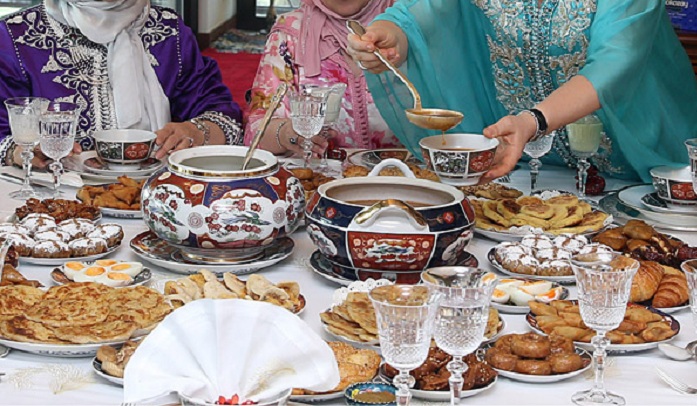
The holy month of Ramadan in Morocco is always highly anticipated. It’s a month of prayer, worship, good deeds, and charitable ventures.
This Islamic holiday comes to celebrate the anniversary of the revelation of the holy book, the Quran, to prophet Muhamed.
For those who aren’t familiar with what this holy month entails, Islamic tradition calls for fasting during this time.
This means any person who’s hit puberty is required to abstain from eating, drinking, smoking, and engaging in sexual activity.
This fasting occurs from dawn to dusk: that is from the prayer of Fajr until the prayer of Maghreb.
The focus of this sacred month is deeply entrenched in repentance through acts of kindness, compassion, and altruism.
It’s considered to be an occasion for Muslims to reflect on their actions, atone for their sins, seek god’s forgiveness, and absolve their souls.
Fasting also puts the fortunate in the shoes of the less fortunate (those who can’t always afford food). It’s a reminder to offer gratitude for one’s blessings.
But it’s also a reminder to share those blessings with the poor and the needy.
Although the month of Ramadan puts a high emphasis on the spiritual side, several cultures consider food a big part of it as well. Moroccan children and adults alike always look forward to the celebration of this holiday.
Particularly since it involves spending time with your family members and loved ones.
Whether it’s over dua (prayers of supplication), prostration or prayers in the neighborhood mosque, but especially iftar.
Iftar is the meal at which people are allowed to break their fast.
In Morocco, it usually involved several Ramadan-specific dishes, soups, sweets, and pastries. And many families start preparations a couple of months before.
Table of Contents
Food Preparations for Ramadan in Morocco
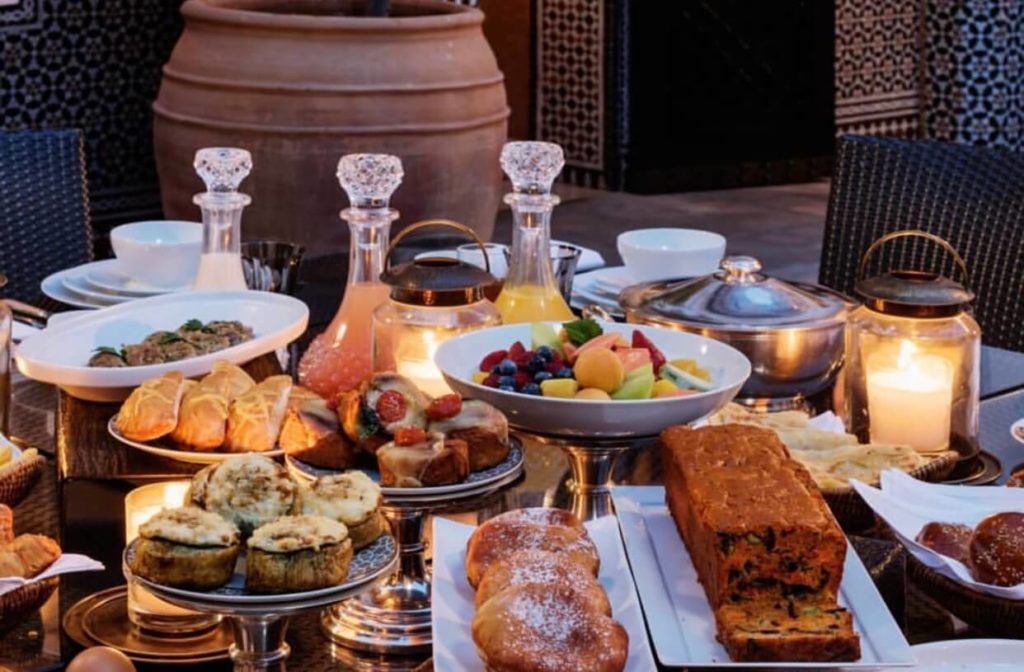
Food preparations play an essential part in Moroccan Ramadan traditions. Many rich traditional dishes made specifically for this occasion adorn the ftoor (Moroccan word for iftar) table.
While some of these differ from region to region, you can still find some variation of the same dishes in every Moroccan Ramadan menu.
Sellou or Zmita
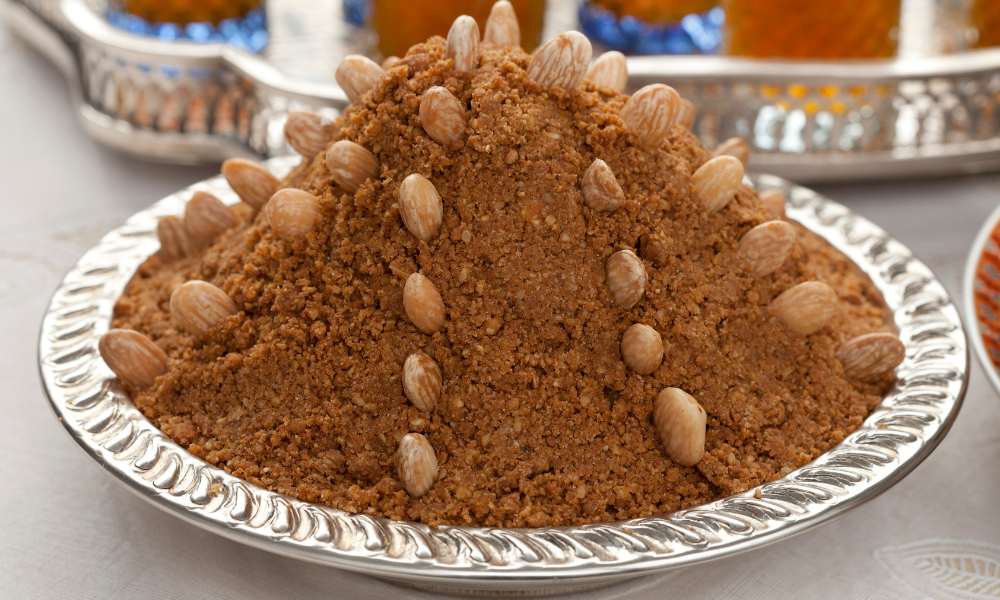
Moroccan Sellou, also called Zmita or Sfouf, is ubiquitous in Ramadan (special occasions as well).
It’s a one of a kind Moroccan sweet made from a mixture of toasted sesame seeds, toasted flour, clarified butter, sugar, honey, and fried almonds.
Moroccan families will buy sesame seeds a month or two ahead to start the preparations.
Cleaning sesame seeds is a collective tradition that women of the household will engage in over a tray of mint tea. In the afternoon, after finishing all house chores, they will pick through the seeds to discard any dirt or pebbles.
Then the sesame seeds are washed, dried, and toasted in the oven.
After all the ingredients are prepared, they’re mixed together and kneaded into a crumbly dough. Decoration usually calls for caster sugar and almonds.
Chebakia and Almond briouat
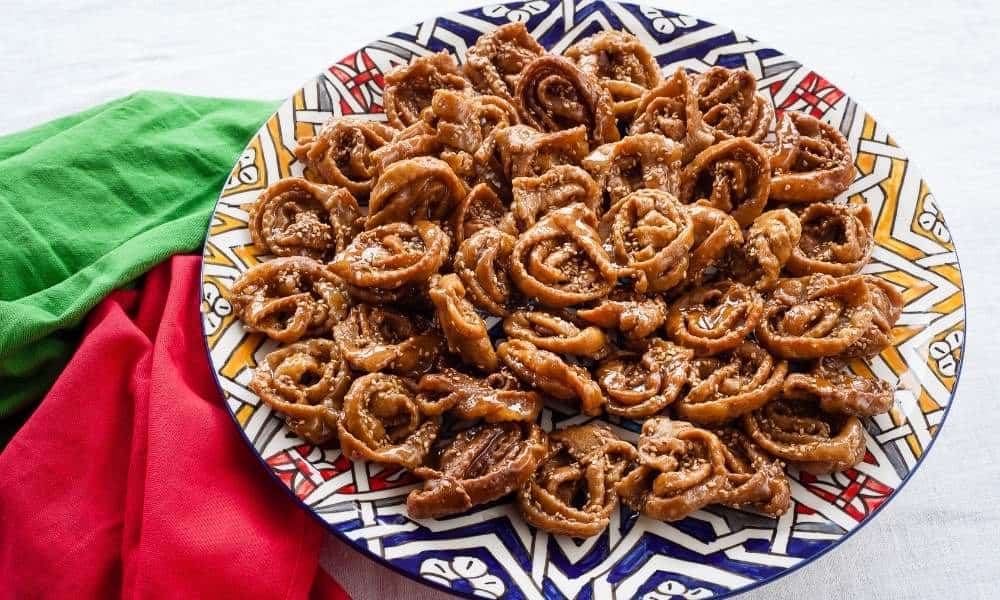
Halwa Chebakia is a Moroccan cookie made from dough, folded into the shape of a flower, fried in oil and coated with honey and sesame seeds.
There are many variations of this sweet, including Griouech or halwa M’kharqa with more or less the same texture and presentation.
Almond briouat also make an appearance at the typical Moroccan Ramadan Ifta table.
This type of cookie is made from very thin dough sheets that resemble the look and texture of filo dough. The dough is then stuffed with sugary almond paste.
Much like the majority of Moroccan sweets, it’s then fried in oil and coated in honey. These sweets are usually meant to accompany harira soup, for that authentic Moroccan sweet and savory signature.
Harira
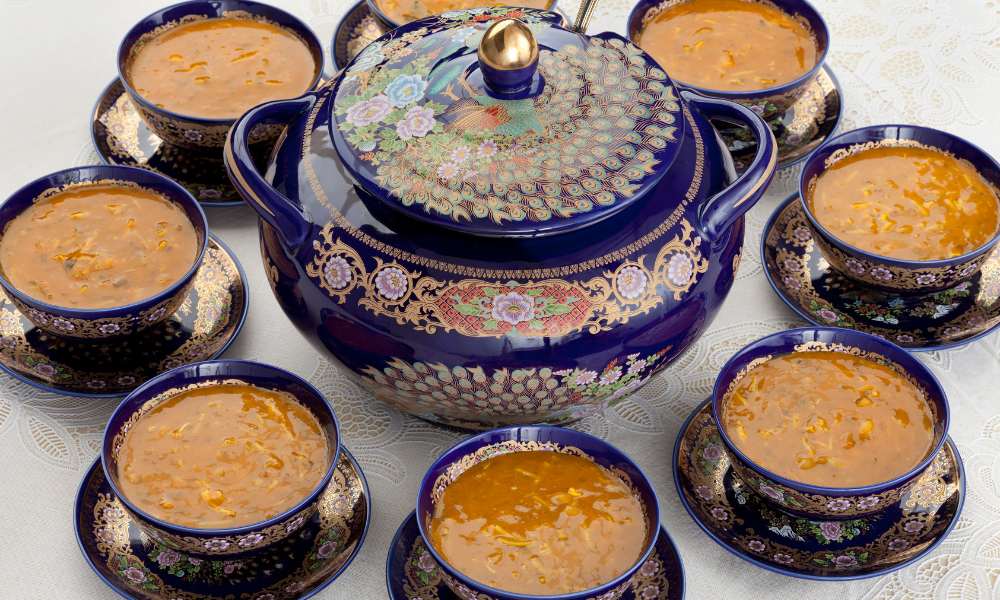
Moroccan Harira soup is usually the piece de resistance in the Moroccan Iftar table. It’s a soup made from a mixture of flour, tomato paste, chickpeas, small cuts of meat, herbs, and spices like ginger, turmeric, and cinnamon. The preparation varies from one region to another.
Some people like to add lentils, rice, celery leaves, soup bones, and even smen (a salty fermented butter made with sheep, goat or cow’s milk).
Harira is eaten all year-round and there are many food joints that specialize in this soup, but it’s particularly popular in Ramadan.
It’s usually served with boiled eggs, dates, and chebakia. Msemen and Harsha
Msemen is basically a very thick and oily crepe, made using wheat and durum flour.
The dough is strenuously kneaded, folded into small squares and cooked in a pan sprayed with some oil. While Harsha has more of a cornbread texture and is baked using semolina.
It’s very crumbly and can be made either sweet or savory. Both Msemen and Harsha are served for breakfast accompanied by a variety of spreads like soft cheese, olive oil or butter and honey.
Baghrir
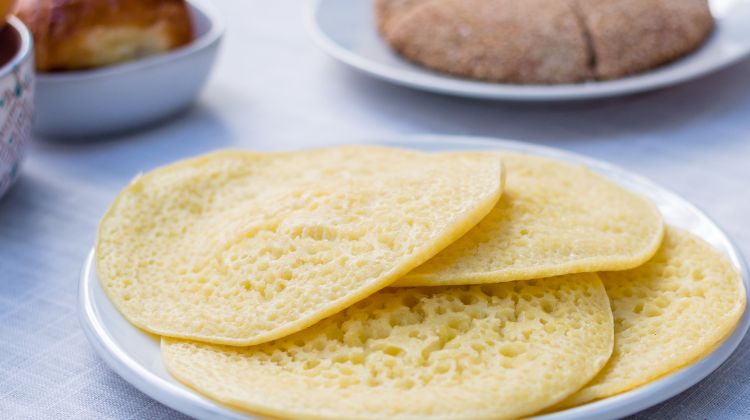
Baghrir, also called Moroccan crepe or the crepe with a thousand holes, is another variation of bread, with its soft and spongy texture.
it resembles the lightness of a typical pancake and is often served with butter, honey, orange blossom water or jam.
Batbout
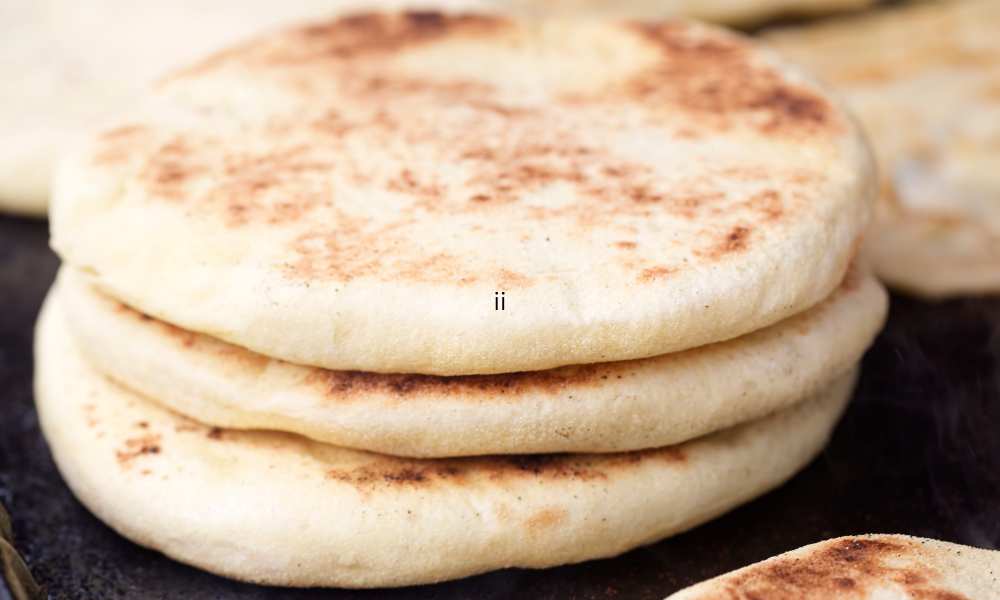
Batbout is the equivalent of a really chewy bagel. It’s a type of bread that cooks with a pocket, which makes it perfect for sandwich fillers. It is usually served with honey, butter, olive oil or jam, depending on preference.
Batbout has many other names, depending on the region, it can be referred to as matlou’, toghrift or mkhamer.
This type of bread can be shaped as big or small as you like, with varying degrees of thickness.
Typically, small batbout is served as bite-sized sandwiches, filled with cream cheese and turkey, chicken, or ground beef.
While larger batbout is served as is and acts as a substitute for bread accompanying tagines and stews.
Grilled meats and fish
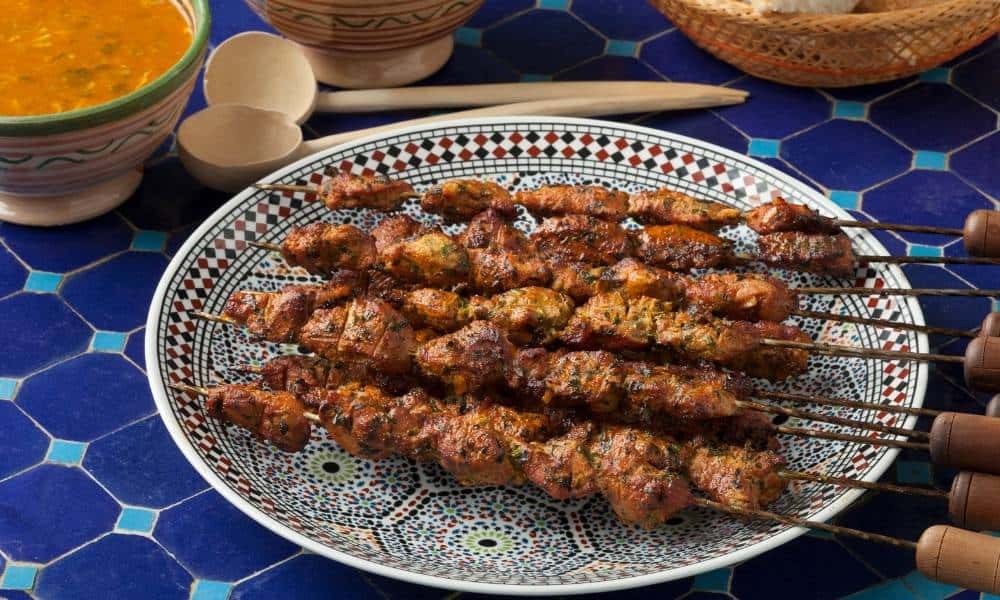
Most times ftoor will also double as dinner. So in addition to sweet and savory pastries, Moroccan families will also serve brochettes, and grilled meats and fish.
Lamb and beef kebabs, marinated chicken and turkey breast are skewered and grilled half an hour before the azan of the Maghreb prayer.
They’re then served warm with tomato sauce or ginger vinaigrette and a side of traditional bread.
Mint tea and juices
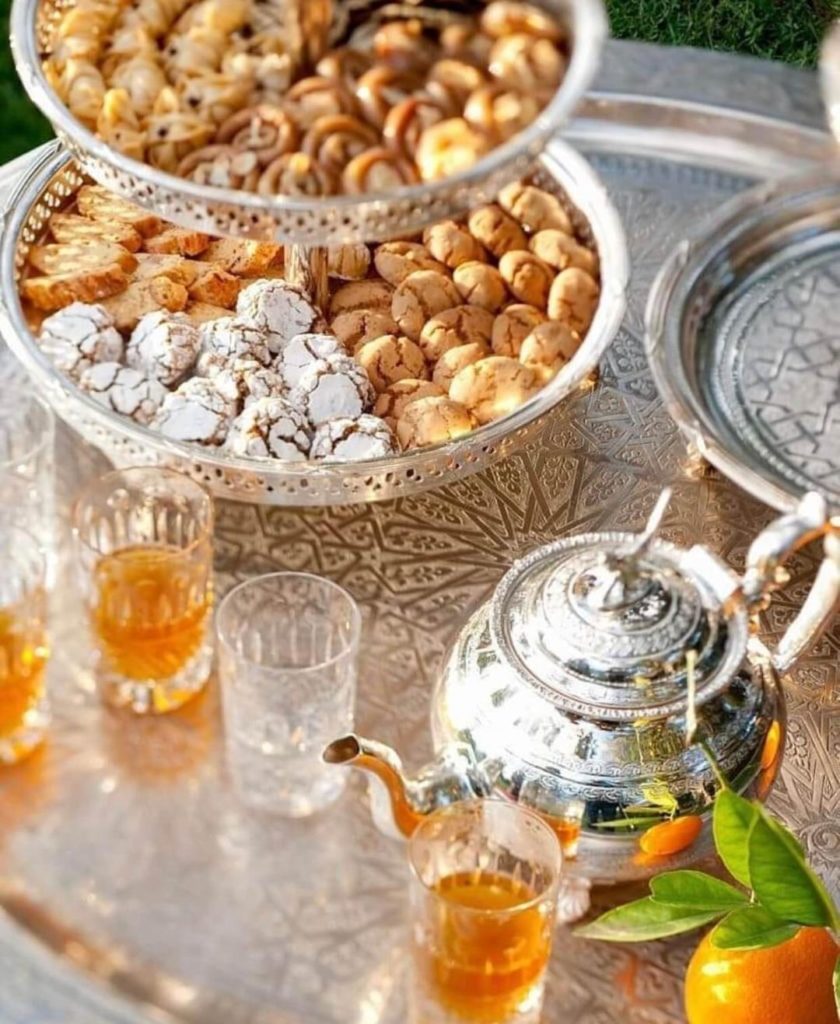
A mint tea or atay bi nana tray is mandatory for the ftoor. Moroccan families will serve tea, juices, milkshakes, and café au lait to accompany the large range of Ramadan dishes.
Mint tea is deeply ingrained in Moroccan culture and is prepared and offered at all times, whether it’s a casual family gathering or a special occasion.
It’s made by steeping green tea and spearmint leaves in hot water. It’s then let to boil over the kitchen stove in the berrad (Moroccan teapot) and served piping hot with lots of sugar.
Frequently Asked Questions
Q: What is Ramadan in Morocco?
A: Ramadan in Morocco is a holy month of prayer, worship, good deeds, and charitable ventures celebrated to commemorate the anniversary of the revelation of the Quran to Prophet Muhammad.
Q: What is the significance of fasting during Ramadan in Morocco?
A: Islamic tradition calls for fasting during Ramadan in Morocco, which means that any person who has hit puberty is required to abstain from eating, drinking, smoking, and engaging in sexual activity from dawn to dusk.
Q: Can non-Muslims eat and drink during the day in Morocco during Ramadan?
A: Yes, non-Muslims are allowed to eat and drink during the day in Morocco during Ramadan.
However it’s important be considerate of those who are fasting during Ramadan and avoid consuming food or beverages in public areas.
Q: Are tourist attractions open during Ramadan in Morocco?
A: Most tourist attractions in Morocco are open during Ramadan, but their operating hours may be shorter than usual.
Q: Is it okay to visit Morocco during Ramadan?
A: Yes, it is okay to visit Morocco during Ramadan. However, When visiting Morocco in Ramadan, it’s important to respect the customs and traditions of Morocco during this holy month.
Ultimately it depends on your preferences and desired experiences. If you’re seeking a party or shopping atmosphere, Ramadan may not be ideal
If you’re open to a unique cultural experience and can adapt to a more relaxed and flexible schedule, Ramadan could offer a wonderful opportunity to visit.
Q: What are some traditional Moroccan dishes that are typically prepared during Ramadan?
A: Traditional Moroccan dishes prepared during Ramadan include Sellou or Zmita, Halwa Chebakia, Almond Briouat, Harira soup, Msemen and Harsha, Baghrir, and Batbout. These dishes are rich in traditional flavors and are prepared specifically for the occasion of Ramadan.